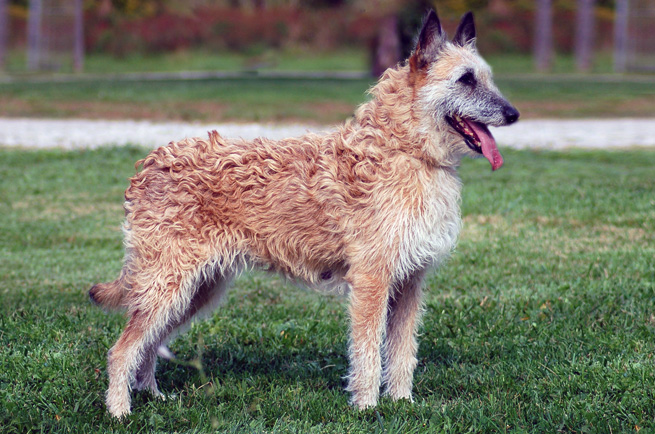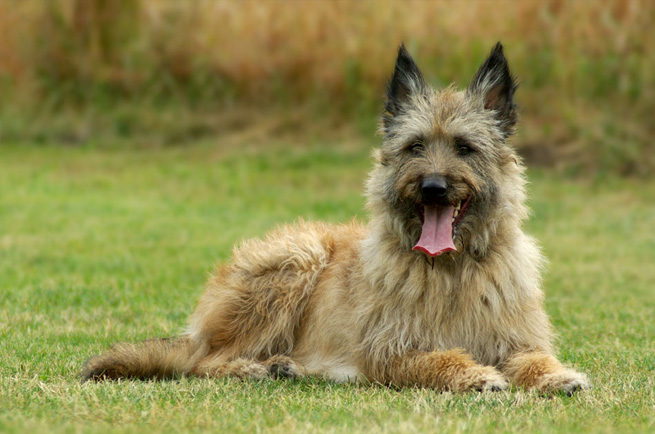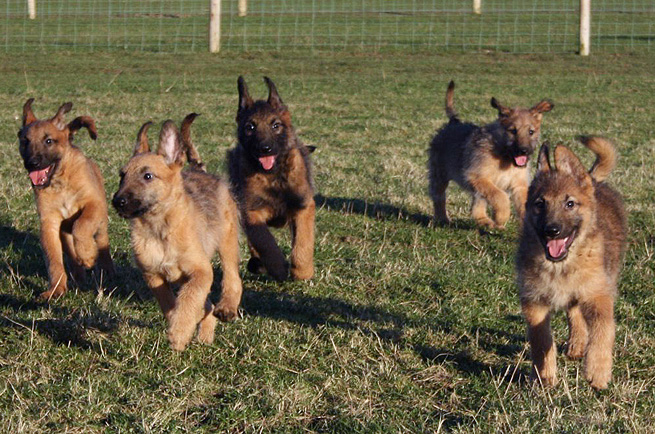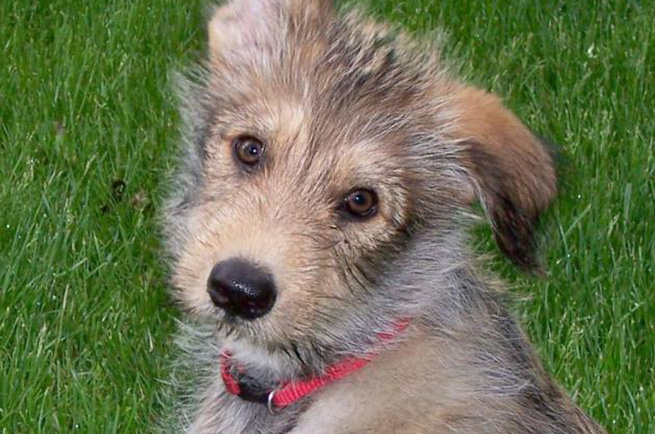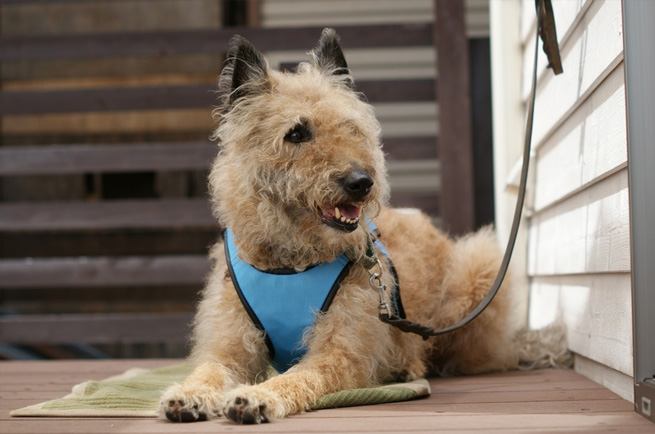Belgian Shepherd — Laekenois
This breed is rough-coated with a more delicate frame than that of the German Shepherd Dog which it is often mistaken for. With a more refined head and agile movement, the Laekenois is muscular, alert and relatively easy to train.
Other Names
Laekense, Chien de Berger Belge, Belgian Shepherd, Belgian Sheepdog
Country of Origin
Belgium
Colour
The Laekenois is reddish fawn in coat colour and typically has a black mask and dark spotting on the tail.
Size
Large
Height / Weight
This breed typically measures from 56 – 66cms and weighs 27 – 29kgs.
Health
Prospective parents should ask for certification to ensure the puppy's parents are both eye tested and hip-scored. Epilepsy and skin conditions are also a risk with this breed.
Life Span
12-14 years
Intelligence
The Laekenois requires a gently yet persistent training method and if willing to learn and socialised from a young age, are quick to pick up on obedience cues. From 9 months of age they can appear to rebel but consistent basic training will ensure that by 18 months, your cheeky pooch is back to its diligent personality!
Exercise
High
Suitability (Children)
Low
Feeding
With a typically hearty appetite, this breed is able to follow a normal doggy diet.
Feeding Cost
$15-$20 p/w
Other Cost
Excercise
The Laekenois requires strenuous exercise and mental stimulation regularly. They are not recommended for owners who are not home often.
Hair Shed
Little
Ailments
Prospective parents should ask for certification to ensure the puppy's parents are both eye tested and hip-scored. Epilepsy and skin conditions are also a risk with this breed.
Grooming
This rough haired breed does not require much grooming, a good brush every now and then should suffice.
Grooming Frequency
Up to once a week
Trimming
None
The Belgian Shepherd dog is the only breed in the world that comes in four varieties: the rare rough-coated reddish fawn ‘Laekenois’, the long-haired fawn, red or grey ‘Tervueren’, the long-haired black ‘Groenendael’ and the short-coated red, fawn or grey ‘Malinois’ and. Originating from Belgium, they are named after the areas in Belgium from which they came: Laeken, Tervuren, Groenendael and Malines. Hard working sheepdogs from Belgium have been recognised since the Middle Ages. At this time the type varied greatly and breeding was based on working ability. As they were bred locally certain common characteristics began to appear. In the 1890s a Professor of the Belgian School of Veterinary Sciences recorded standards for the various types of Belgian sheepdogs. It was noted that they were all similar in type with the main difference being the coat. The Professor then divided them into varieties and advised breeding them as separate breeds. Once there were as many as eight varieties; now there are only four. The Laekenois is the rarest of the four varieties. They were originally used for herding and to guard the linen fields where valuable cloths were laid in the sun and rain. As their coats were harsh and wiry they were ideal for outdoor work in all weathers. They are the least numerous of the four varieties, possibly because of its curious appearance. Today the Belgian army and the police use them.
comments powered by Disqus

